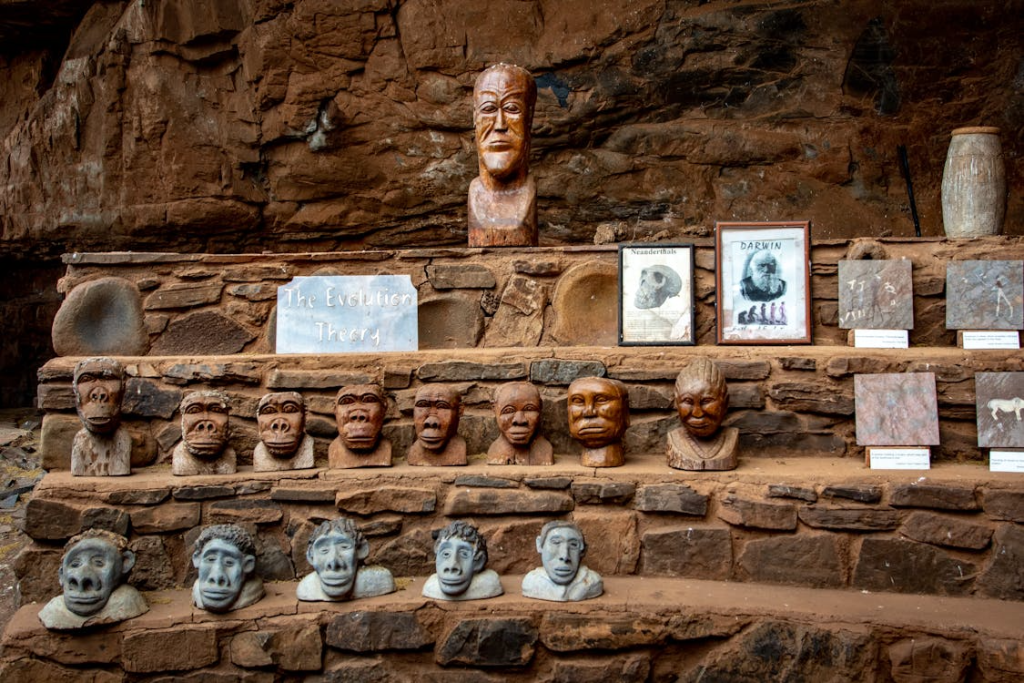Archaeologists in Germany have uncovered astounding evidence of a 125,000-year-old “fat factory” run by Neanderthals. A new study shows our ancient relatives had a sophisticated process for extracting grease from animal bones. This activity may have been a crucial strategy for their survival. It offers a new window into their daily lives and challenges old assumptions.
The Crucial Role of Fat

This “fat factory” may have saved the Neanderthals from a lethal condition known as protein poisoning or “rabbit starvation”. This condition occurs when humans consume too much protein without enough fat or carbohydrate intake. Given their largely meat-based diet, Neanderthals were at high risk of this condition.
Fat supplies more than twice the calories per gram as protein or carbohydrates. During harsh winters, these factories may have been an energy source that would be critical when food sources are scarce. The ability to render grease from bones ensured a stable supply of high-calorie food.
Unearthing the Neumark-Nord Site

The discovery was made at the Neumark-Nord archaeological site. Located near Leipzig, this former lakeside landscape attracted ancient hunters for millennia. Over several years, excavators unearthed a massive collection of artifacts. They found approximately 120,000 bone fragments. Alongside these, they recovered 16,000 flint tools. Evidence of controlled fire use was also present at the site.
The bone fragments came from at least 172 large animals. Researchers discovered bones from various livestock animals such as ancient horses, cattle, and deer. Neanderthals purposefully transported these animals to this specific area. The site seems to have been a dedicated industrial space.
Read More: Archaeologists Uncover Ancient Mesoamerican Fertility Site in Remote Mexican Cave
A Systematic Process for Survival
The Neanderthals at Neumark-Nord used a 2-step method. This process was designed to extract the maximum amount of nutrients. First, they used stone hammers and anvils to smash the bones. This allowed them to get to the rich marrow inside. After extracting the marrow, a second, more intensive process began. Neanderthals crushed the remaining bones into very small pieces. They then boiled these fragments in water. This rendering process caused the fat to separate and float to the surface. Once cooled, the grease could be easily skimmed off and stored. This dual method ensured that every part of the animal was used efficiently.
Evidence of Advanced Planning
This discovery of the Neanderthals’ “fat factory” also revealed how labor-intensive and time-consuming the process was. It also demonstrated how Neanderthals had to engage with prior planning and organisation, showing they were highly organised. The evidence suggests Neanderthals planned their hunts carefully.
They then transported large animal carcasses to the processing site indicating their strategic approach to resource management. The findings also suggest the use of food storage. The rendered fat could have been cached for later use. This capability would have been invaluable during seasons of resource scarcity. It shows a similarity to the behaviors of hominid foragers.
Resource Intensification Redefined
The fat rendering process is a form of “resource intensification.” This means getting more utility out of available materials. The Neanderthal ‘Fat Factory’ is now the earliest clear example of this behavior. It pushes back the known origins of such practices by a significant margin.
Previously, the oldest evidence for intensive grease-rendering was dated to 28,000 years ago. This was long after Neanderthals had been known to have gone extinct. The Neumark-Nord discovery demonstrates that Neanderthals were using these grease-rendering techniques about 100,000 years before homosapiens did.
The Labor-Intensive Reality
The process of fragmenting the bones of 172 large mammals was tedious, requiring significant amounts of time and energy. This was not a casual or uncommon activity but a focused, industrial effort. Most of the bone fragments found at the site were very small. In fact, two-thirds measured less than 3 centimeters. These small pieces make it easier for efficient grease extraction as it maximizes the surface area for boiling. Such a labor-intensive activity only becomes feasible when done at a large scale. This indicates the Neanderthals were processing many animals at once.
Read More: Incredible Find: 6-Year-Old Discovers 50,000-Year-Old Neanderthal Axe on Beach
Who Were the Neanderthals?
Neanderthals are known as one of the closest extinct relatives to modern humans. They first emerged approximately 400,000 years ago. These archaic humans disappeared from the world around 34,000 years ago. Archaeologists unearthed their first remains during the 19th century. Subsequent evidence shows they were surprisingly sophisticated. They crafted complex tools, developed early forms of glue, and perhaps created art, upsetting preconceived notions of the behaviors of Neanderthals. For years, researchers understood Neanderthals as successful hunters.
Their diet consisted mostly of meat from large game animals. We have learned much about their hunting tactics and meat consumption habits. Archaeologists knew very little about how Neanderthals actually processed animal carcasses after a successful hunt. This specific area of their daily life and survival skills stayed a mystery until recent findings.
Implications for Human Evolution
The fat factory is another example of their surprisingly creative and innovative nature. It demonstrates a detailed knowledge of nutrition and resource management. They require learning and the transmission of knowledge across generations. This discovery reinforces that Neanderthals were highly adaptable and resourceful hominins. They were far more capable than once believed.
This discovery also highlights the similarities between Neanderthals and our own species. Lutz Kindler, a lead researcher, notes that archaeology seeks to find these connections. The organized, strategic behavior seen at Neumark-Nord mirrors practices seen in later human populations. It shows that key elements of what we consider “human” behavior have deep roots. This fat factory was a critical part of Neanderthal life.
Read More: After Deciphering 3,000 Year Old Map, Scientist Believe They’ve Discovered Noah’s Ark

